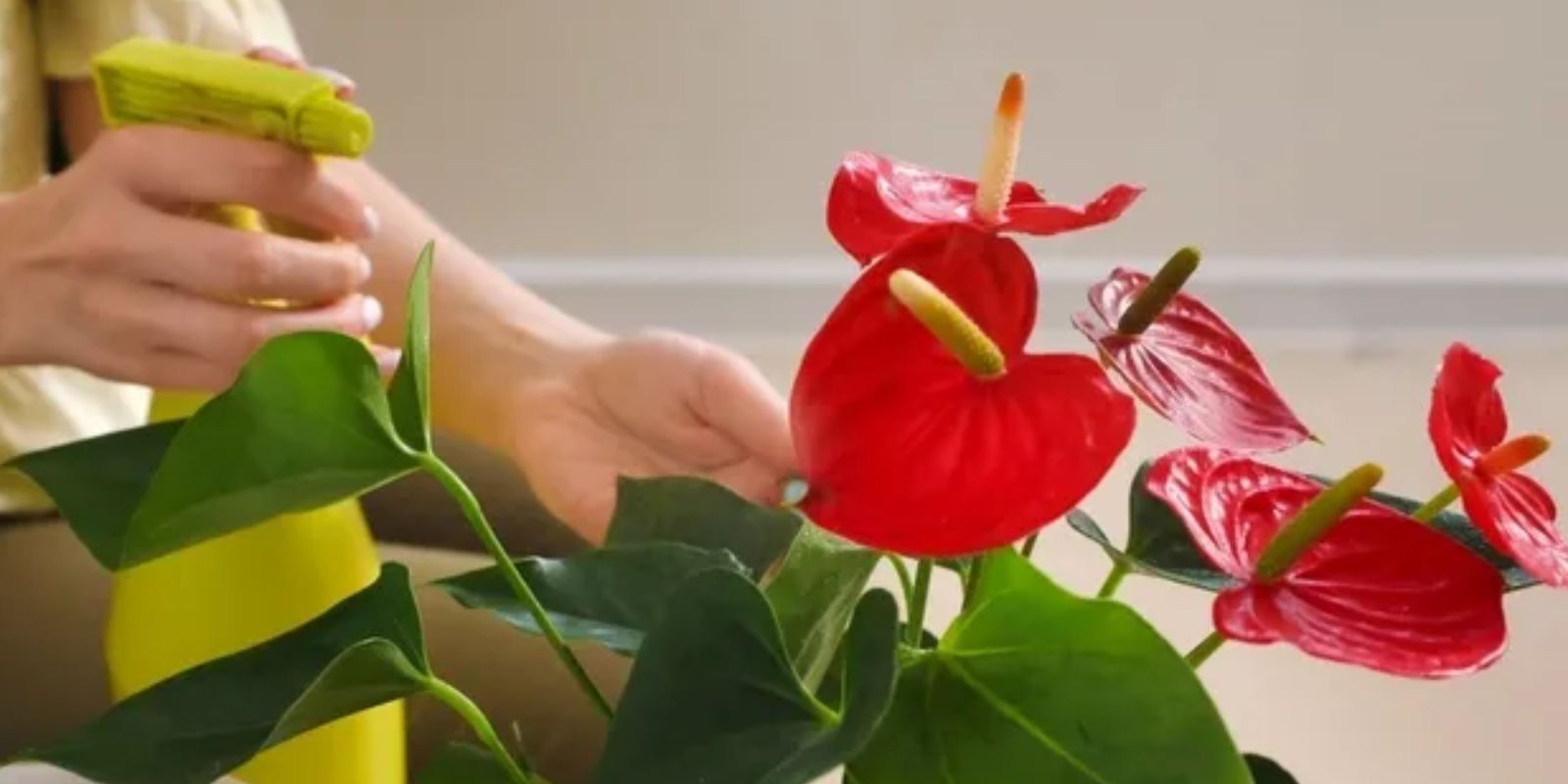Anthuriums, with their glossy, heart-shaped leaves and strikingly beautiful blooms, are a popular choice for both indoor and outdoor gardens. These tropical plants are renowned for their long-lasting, colorful spathes that can bring a touch of elegance to any space. However, despite their general ease of care, many gardeners struggle to get their Anthuriums to bloom as abundantly as they would like. Fortunately, there is a relatively unknown trick that can help unlock the full potential of these magnificent plants. In this article, we’ll explore this little-known technique in detail, providing you with a comprehensive guide to achieving lush, vibrant Anthurium blooms.
Understanding Anthuriums: Basic Care and Requirements
Before delving into the secret to encouraging blooms, it’s essential to understand the basic care needs of Anthuriums. Proper care lays the foundation for a thriving plant that can produce abundant flowers.
1. Light Requirements:
Anthuriums thrive in bright, indirect light. Direct sunlight can scorch their leaves, so it’s best to place them in a location with filtered light or near a window with sheer curtains. If natural light is insufficient, consider using a grow light to provide additional illumination.
2. Temperature Preferences:
These tropical plants prefer a warm environment. The ideal temperature range for Anthuriums is between 65-80°F (18-27°C). They should be protected from cold drafts and sudden temperature fluctuations, which can stress the plant and inhibit blooming.
3. Soil and Potting:
Anthuriums require well-draining soil to prevent root rot. A peat-based mix with added perlite or orchid bark is ideal. Ensure the pot has drainage holes to allow excess water to escape.
4. Watering and Humidity:
Water your Anthurium when the top inch of soil feels dry. Avoid letting the plant sit in water, as this can lead to root rot. Additionally, Anthuriums thrive in high humidity. Increase humidity by misting the plant regularly or using a humidifier.
5. Fertilization:
Feed your Anthurium with a balanced, water-soluble fertilizer every 6-8 weeks during the growing season. A fertilizer with a higher potassium content can be particularly beneficial for promoting blooming.
The Secret to Encouraging Anthurium Blooms
Despite providing ideal conditions, many gardeners find that their Anthuriums are not producing as many flowers as they would like. The secret to encouraging abundant blooms lies in understanding and implementing specific techniques that cater to the plant’s natural growth cycle.
1. Utilize the Right Fertilizer:
One of the most crucial factors in promoting Anthurium blooms is the use of the right fertilizer. While a balanced fertilizer is essential for overall plant health, a fertilizer high in potassium can significantly boost flower production. Potassium supports the plant’s flowering processes, helping to enhance the size and vibrancy of the blooms.
How to Apply:
- Use a water-soluble fertilizer with a higher potassium content, such as a 10-30-10 or 15-30-15 formulation.
- Dilute the fertilizer according to the manufacturer’s instructions to avoid over-fertilizing.
- Apply the fertilizer to the soil every 6-8 weeks during the growing season (spring and summer).
2. Maintain Optimal Temperature and Humidity:
Anthuriums are tropical plants that require consistent warmth and humidity to thrive. Fluctuations in temperature or humidity can stress the plant and impact its blooming ability.
Temperature Management:
- Keep the plant in a warm environment with temperatures consistently between 65-80°F (18-27°C).
- Avoid placing the plant near cold drafts, air conditioners, or heaters.
Humidity Enhancement:
- Increase humidity by misting the plant regularly with water.
- Use a humidifier to maintain high humidity levels, especially during dry periods or in air-conditioned environments.
- Alternatively, place the plant on a humidity tray filled with water and pebbles.
3. Proper Watering Techniques:
Watering practices play a significant role in the health and blooming of Anthuriums. Both over-watering and under-watering can affect the plant’s ability to produce flowers.
Watering Guidelines:
- Check the soil moisture regularly. Water when the top inch of soil feels dry.
- Ensure the pot has adequate drainage to prevent waterlogging.
- Avoid letting the plant sit in excess water, which can lead to root rot and other issues.
4. Pruning and Maintenance:
Regular pruning and maintenance can help keep the Anthurium plant healthy and promote new growth, which in turn supports flowering.
Pruning Steps:
- Remove any dead or yellowing leaves to improve air circulation and overall plant health.
- Trim back any spent flowers or flower stalks to encourage the development of new blooms.
5. Pollination and Flower Care:
While Anthuriums are generally self-pollinating, ensuring that the flowers are properly pollinated can help enhance fruit set and flower quality.
Pollination Tips:
- Gently tap the flower stalks to help distribute pollen.
- Ensure adequate air circulation around the plant to facilitate natural pollination.
Troubleshooting Common Issues
Even with the right care and techniques, you may encounter issues that affect blooming. Here are some common problems and their solutions:
1. Lack of Blooms:
If your Anthurium is not flowering despite proper care, it may be due to insufficient light or a lack of potassium in the fertilizer. Increase light exposure and switch to a high-potassium fertilizer.
2. Yellowing Leaves:
Yellowing leaves can indicate over-watering, nutrient deficiencies, or poor soil conditions. Adjust watering practices, check for nutrient imbalances, and ensure proper soil drainage.
3. Wilting or Drooping:
Wilting or drooping can result from inconsistent watering or environmental stress. Check soil moisture and adjust watering as needed. Ensure the plant is protected from drafts and extreme temperatures.
Conclusion
Reviving and encouraging abundant blooms in Anthuriums involves a combination of proper care, targeted fertilization, and environmental management. By implementing these techniques and paying attention to the plant’s specific needs, you can unlock the secret to stunning, vibrant flowers that will enhance the beauty of any space. Embrace these strategies, and watch as your Anthuriums transform into a spectacular display of color and elegance. Happy gardening!

